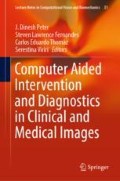Abstract
Understanding the meaning of protein sequences is tedious with human efforts alone. Through this work, we experiment an NLP technique to extract features and give appropriate representation for the protein sequences. In this paper, we have used GloVe representation for the same. A dataset named Swiss-Prot has been incorporated into this work. We were able to create a representation that has comparable ability to understand the semantics of protein sequences compared to the existing ones. We have analyzed the performance of representation by the classification of different protein families in the Swiss-Prot dataset using machine learning technique. The analysis done by us proved the significance of this representation.
Access this chapter
Tax calculation will be finalised at checkout
Purchases are for personal use only
References
Ando D, Colvin M, Rexach M, Gopinathan A (2013) Physical motif clustering within intrinsically disordered nucleoporin sequences reveals universal functional features. PloS One 8(9):e73,831
Asgari E, Mofrad MR (2015) Continuous distributed representation of biological sequences for deep proteomics and genomics. PloS One 10(11):e0141,287
Balakrishnan BGH, Vinayakumar AKM, Padannayil SK. Nlp cen amrita@ smm4h: health care text classification through class embeddings
Barathi Ganesh H, Anand Kumar M, Soman K (2016) Distributional semantic representation in health care text classification. CEUR 1737
Bork P, Dandekar T, Diaz-Lazcoz Y, Eisenhaber F, Huynen M, Yuan Y (1998) Predicting function: from genes to genomes and back1. J Mol Biol 283(4):707–725
Cai C, Han L, Ji ZL, Chen X, Chen YZ (2003) Svm-prot: web-based support vector machine software for functional classification of a protein from its primary sequence. Nucleic Acids Res 31(13):3692–3697
Ganesh HB, Kumar MA, Soman K (2016) From vector space models to vector space models of semantics. In: Forum for information retrieval evaluation. Springer, Berlin, pp 50–60
George A, Soman K et al (2018) Teamcen at semeval-2018 task 1: global vectors representation in emotion detection. In: Proceedings of the 12th international workshop on semantic evaluation, pp 334–338
Huynen M, Snel B, Lathe W, Bork P (2000) Predicting protein function by genomic context: quantitative evaluation and qualitative inferences. Genome Res 10(8):1204–1210
Lasko TA, Denny JC, Levy MA (2013) Computational phenotype discovery using unsupervised feature learning over noisy, sparse, and irregular clinical data. PloS One 8(6):e66,341
Mikolov T, Sutskever I, Chen K, Corrado GS, Dean J (2013) Distributed representations of words and phrases and their compositionality. In: Advances in neural information processing systems, pp 3111–3119
Motomura K, Fujita T, Tsutsumi M, Kikuzato S, Nakamura M, Otaki JM (2012) Word decoding of protein amino acid sequences with availability analysis: a linguistic approach. PloS One 7(11):e50,039
Murzin AG, Brenner SE, Hubbard T, Chothia C (1995) Scop: a structural classification of proteins database for the investigation of sequences and structures. J Mol Biol 247(4):536–540
Pennington J, Socher R, Manning C (2014) Glove: global vectors for word representation. In: Proceedings of the 2014 conference on empirical methods in natural language processing (EMNLP), pp 1532–1543
Searls DB (2002) The language of genes. Nature 420(6912):211
Suykens JA, Vandewalle J (1999) Least squares support vector machine classifiers. Neural Process Lett 9(3):293–300
Author information
Authors and Affiliations
Corresponding author
Editor information
Editors and Affiliations
Rights and permissions
Copyright information
© 2019 Springer Nature Switzerland AG
About this paper
Cite this paper
George, A., Barathi Ganesh, H.B., Anand Kumar, M., Soman, K.P. (2019). Significance of Global Vectors Representation in Protein Sequences Analysis. In: Peter, J., Fernandes, S., Eduardo Thomaz, C., Viriri, S. (eds) Computer Aided Intervention and Diagnostics in Clinical and Medical Images. Lecture Notes in Computational Vision and Biomechanics, vol 31. Springer, Cham. https://doi.org/10.1007/978-3-030-04061-1_27
Download citation
DOI: https://doi.org/10.1007/978-3-030-04061-1_27
Published:
Publisher Name: Springer, Cham
Print ISBN: 978-3-030-04060-4
Online ISBN: 978-3-030-04061-1
eBook Packages: EngineeringEngineering (R0)

